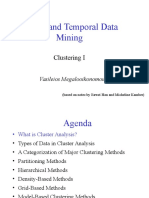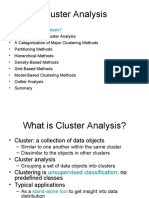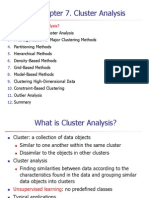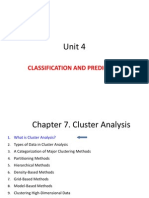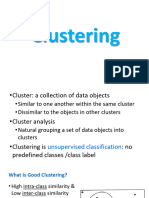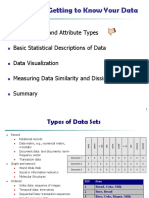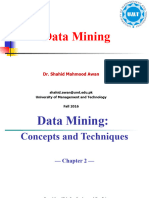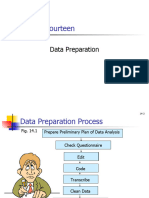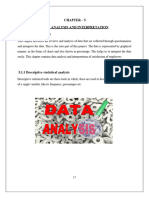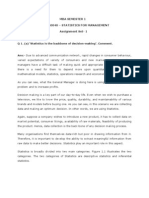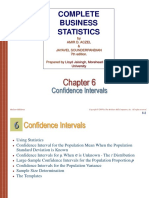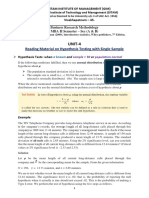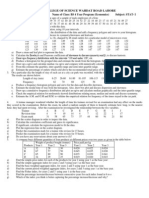0% found this document useful (0 votes)
96 views51 pagesCluster Analysis Data Types
The document discusses different types of data that can be used in cluster analysis, including interval-valued numeric variables, binary variables, categorical variables, and variables with mixed data types. It provides examples of how to calculate dissimilarity between objects for each type of variable. Specifically, it discusses using Euclidean distance for interval data, and discusses approaches for calculating dissimilarity between binary variables, including symmetric and asymmetric approaches using contingency tables.
Uploaded by
rupali wadwaleCopyright
© © All Rights Reserved
We take content rights seriously. If you suspect this is your content, claim it here.
Available Formats
Download as PDF, TXT or read online on Scribd
0% found this document useful (0 votes)
96 views51 pagesCluster Analysis Data Types
The document discusses different types of data that can be used in cluster analysis, including interval-valued numeric variables, binary variables, categorical variables, and variables with mixed data types. It provides examples of how to calculate dissimilarity between objects for each type of variable. Specifically, it discusses using Euclidean distance for interval data, and discusses approaches for calculating dissimilarity between binary variables, including symmetric and asymmetric approaches using contingency tables.
Uploaded by
rupali wadwaleCopyright
© © All Rights Reserved
We take content rights seriously. If you suspect this is your content, claim it here.
Available Formats
Download as PDF, TXT or read online on Scribd
/ 51











